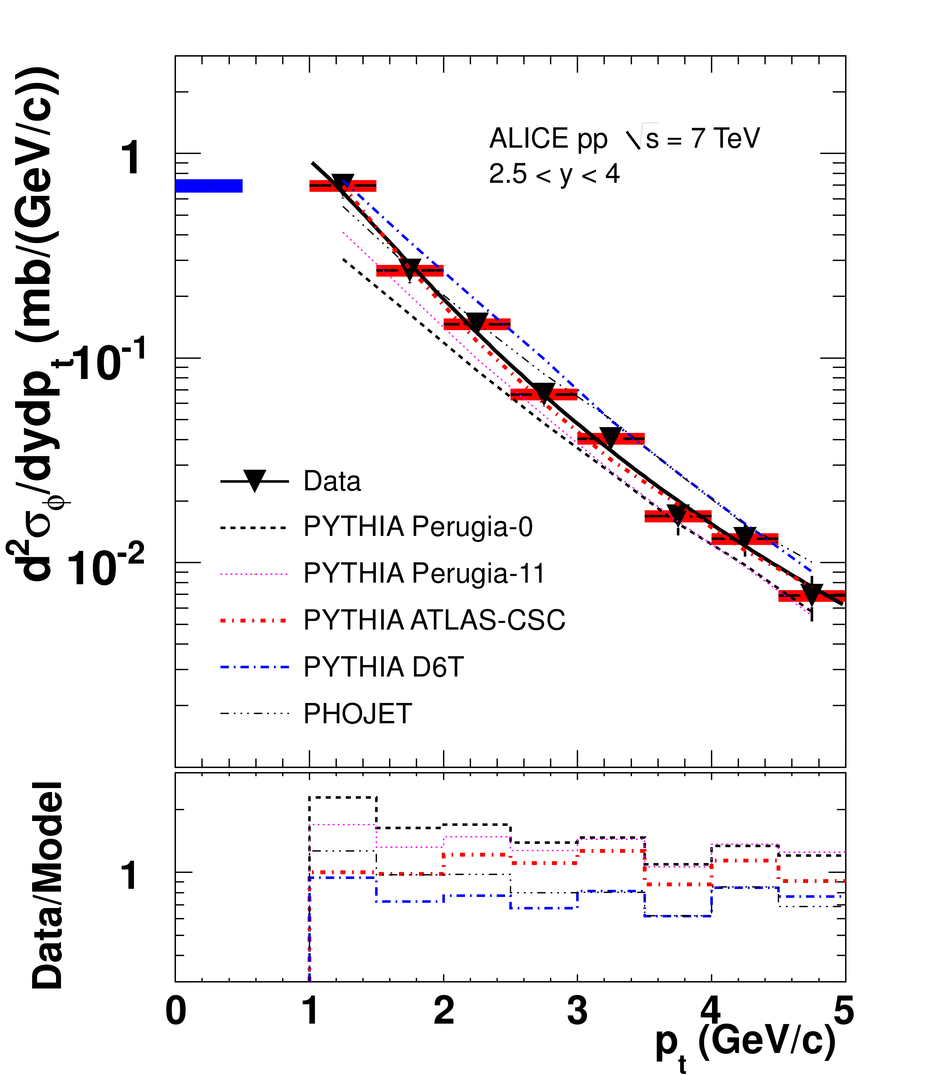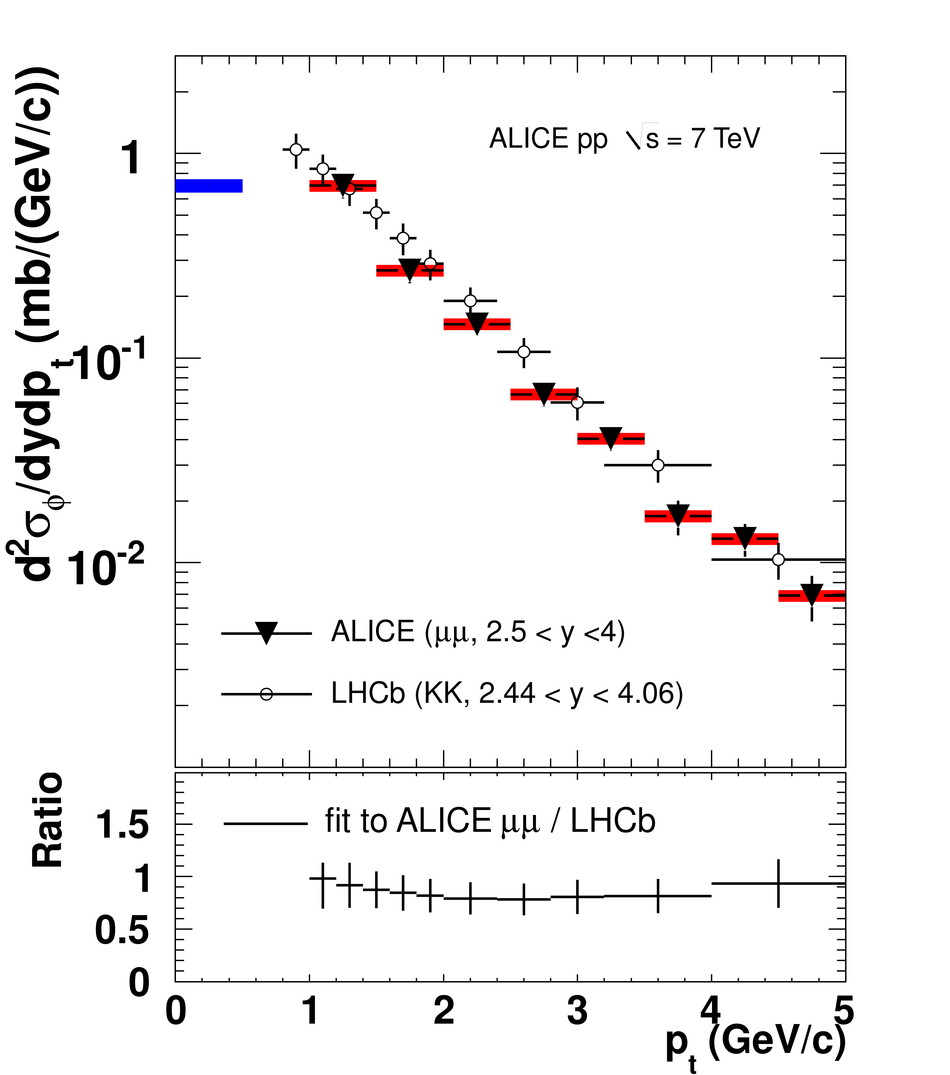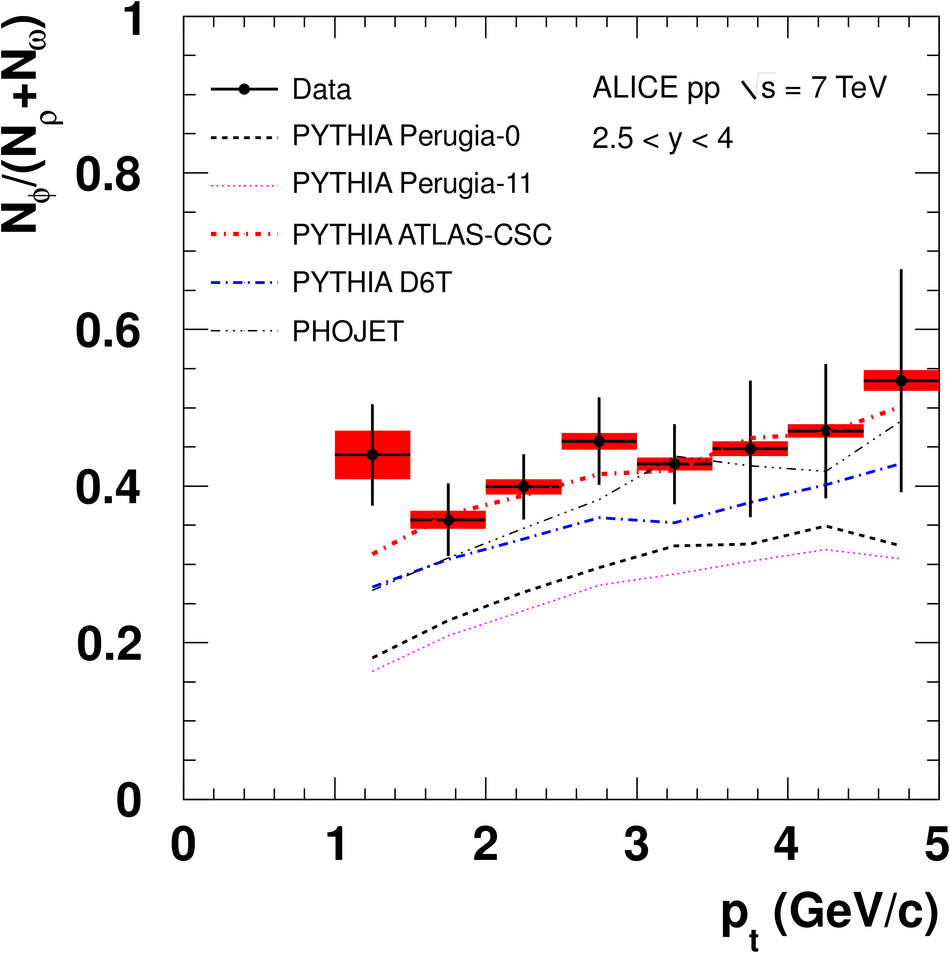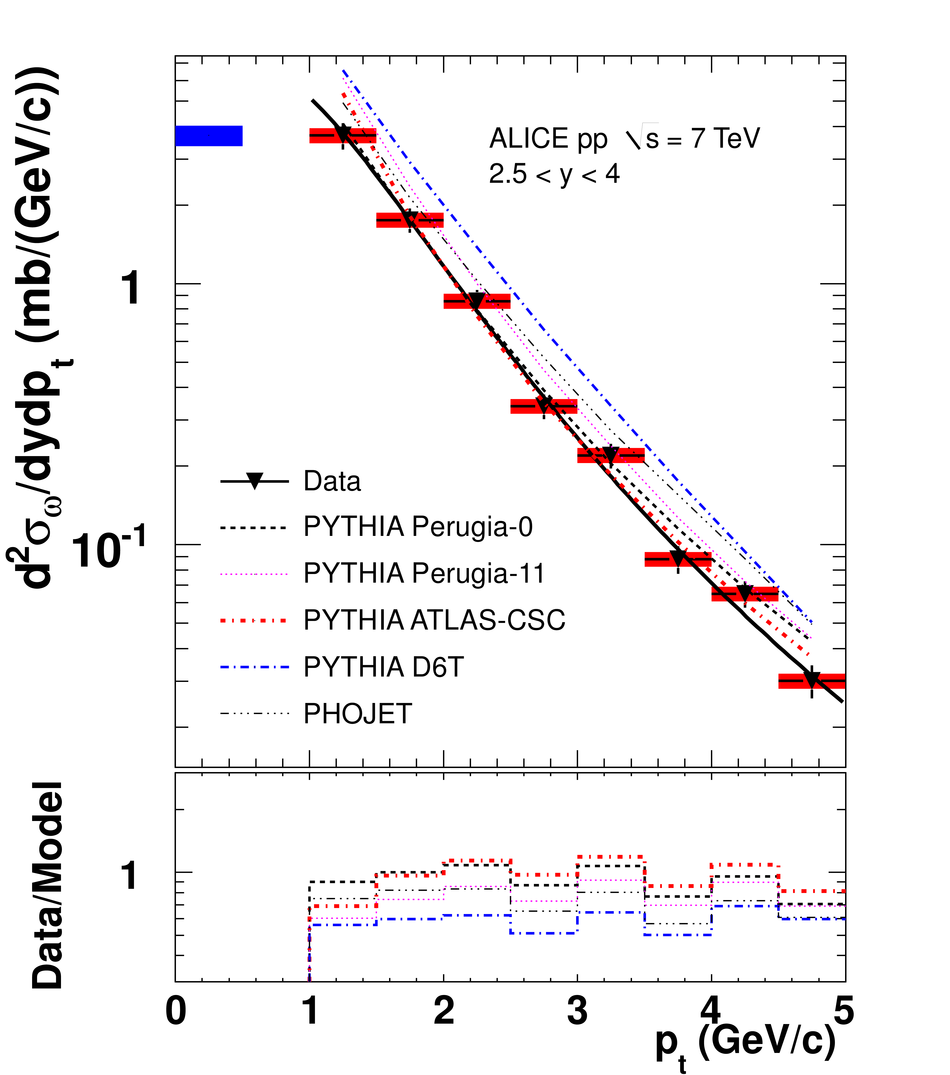The ALICE experiment has measured low-mass dimuon production in pp collisions at $\sqrt{s} = 7$ TeV in the dimuon rapidity region 2.5<~y<~4. The observed dimuon mass spectrum is described as a superposition of resonance decays ($\eta$, $\rho$, $\omega$, $\eta^{'}$, $\phi$) into muons and semi-leptonic decays of charmed mesons. The measured production cross sections for $\omega$ and $\phi$ are $\sigma_\omega$ (1<~$p_{\rm T}$<~5 GeV/$c$,2.5<~y<~4) = 5.28 $\pm$ 0.54 (stat) $\pm$ 0.50 (syst) mb and $\sigma_\phi$(1<~$p_{\rm T}$<~5 GeV/$c$,2.5<~y<~4)=0.940 $\pm$ 0.084 (stat) $\pm$ 0.078 (syst) mb. The differential cross sections $d^2\sigma/dy dp_{\rm T}$ are extracted as a function of $p_{\rm T}$ for $\omega$ and $\phi$. The ratio between the $\rho$ and $\omega$ cross section is obtained. Results for the $\phi$ are compared with other measurements at the same energy and with predictions by models.
Phys. Lett. B 710 (2012) 557-568
HEP Data
e-Print: arXiv:1112.2222 | PDF | inSPIRE
CERN-PH-EP-2011-196






